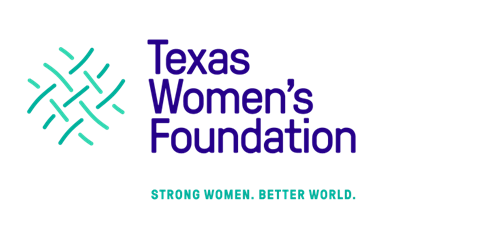Via: KERA
By: Christopher Connelly
With a state legislative session looming, the Texas Women’s Foundation has identified nearly two dozen policy changes that can help make the lives of women and girls better.
The Texas Women’s Foundation has been drawing attention to the economic issues facing women in Texas for years, focusing on four “pillars” that produce financial security: education, child care, health insurance and housing.
Dena Jackson, the foundation’s chief strategy officer, said these bread-and-butter issues haven’t always gotten the kind of attention that they deserve. But the pandemic has changed that.
“Every single one of those has been on the front page of the paper and a headline on KERA for the last two and a half years,” she said. “So what I think COVID did is to elevate attention to areas where women and families in Texas were already struggling.”
While women and girls make up more than half of the state’s population, they also face higher rates of poverty than boys and men, according to the foundation’s latest Economic Issues for Women in Texas report. Women of color face disproportionate burdens, the report points out, due to systemic racism and hurdles created by policymakers.
Child care
The report shows major challenges facing families with young children related to child care. The median income for women in Texas is about $43,000 per year. Full-time infant care for a year will eat up about 21% of those earnings.
Breaking down care costs and income data by race, Jackson said, shows an even greater burden borne out by non-white Texans.
“For a Latina woman in Texas, her median income is $31,500, but she’s got the same costs for child care,” Jackson said. “So she’s paying 27% of her income for child care.”
On the other side, child care workers — who are disproportionately women— are among the state’s lowest-paid workers. While recent increases in worker wages across all sectors of the economy are generally good for women, Jackson said child care facilities find themselves in an increasingly difficult position.
“They can’t increase their prices because people can’t afford it. And therefore, they can’t pay their workers that much more. And so there’s a big struggle for staffing, and of course you have to have adequate staffing in order to properly care for children.”
The challenges flowing from child care have a direct impact on the Texas labor force.
Roughly 1 in 5 workers in Texas are mothers who need child care to go to work. And a costly and insufficient child care system prevents their full participation in the economy: 29% of women who responded to the Household Pulse Survey said they had to work fewer hours to care for children, 26% used vacation or sick days for child care, and 25% did not look for a job because they needed to care for kids.
While the burden falls disproportionately on mothers, fathers are also taking time off work because of child care needs, Jackson pointed out.
“This is a Texas economic issue,” Jackson said. “This is a workforce issue. This is an employer issue. This is not just a ‘women’s issue.’”
Housing
The report identifies housing as “the anchor of economic stability” for families.
“Housing is a true two-generation issue because it impacts the mental health, the physical health and the school performance of both adults and children,” Jackson said.
Even before the skyrocketing increases in rents and home values, Texas lacked an adequate supply of affordable housing. Now, the challenges are even more severe.
The burden is most acutely felt by renters: 45% of Texas renter households are paying more than 30% of their income on housing, compared to 20% of homeowners. And 21% of Texas renter households are paying half of their income or more for housing.
Jackson said she is hopeful that the legislature will take action in the 2023 legislative session to improve tenant rights and curb evictions.
In Dallas, Houston and Fort Worth, eviction filings have shot up as pandemic-related protections have fallen away and rents have climbed. But Jackson points out that Austin, which has continued to require landlords to give tenants the option to catch up on rent to avoid eviction, still has eviction rates far lower than before COVID hit. She’d like to see that “right to cure” become state law.
Policy changes
The foundation’s report lays out nearly two dozen policy recommendations at the local, state and federal level. In addition to housing and child care policy changes, they address pay inequities, education and healthcare.
Jackson said she’s hopeful that increased attention on these key issues impacting women’s lives will help move long-standing policy reforms during the 2023 legislative session.
If the Texas Legislature expands Medicaid — as 38 states have already done — 406,000 uninsured Texas women would be helped, for example. Increasing post-partum health coverage could significantly reduce maternal mortality, Jackson said. The report also calls for more funding for existing pre-K program, mandating paid sick leave and increasing financial aid for college and job training.
“I think that COVID elevated these issues for a broad range of us in this state across socio-economic levels,” Jackson said. “And I think we as Texas voters and Texas citizens will be speaking up more.”
Got a tip? Christopher Connelly is KERA’s One Crisis Away Reporter, exploring life on the financial edge. Email Christopher at cconnelly@kera.org.You can follow Christopher on Twitter @hithisischris.
KERA News is made possible through the generosity of our members. If you find this reporting valuable, consider making a tax-deductible gift today. Thank you.

